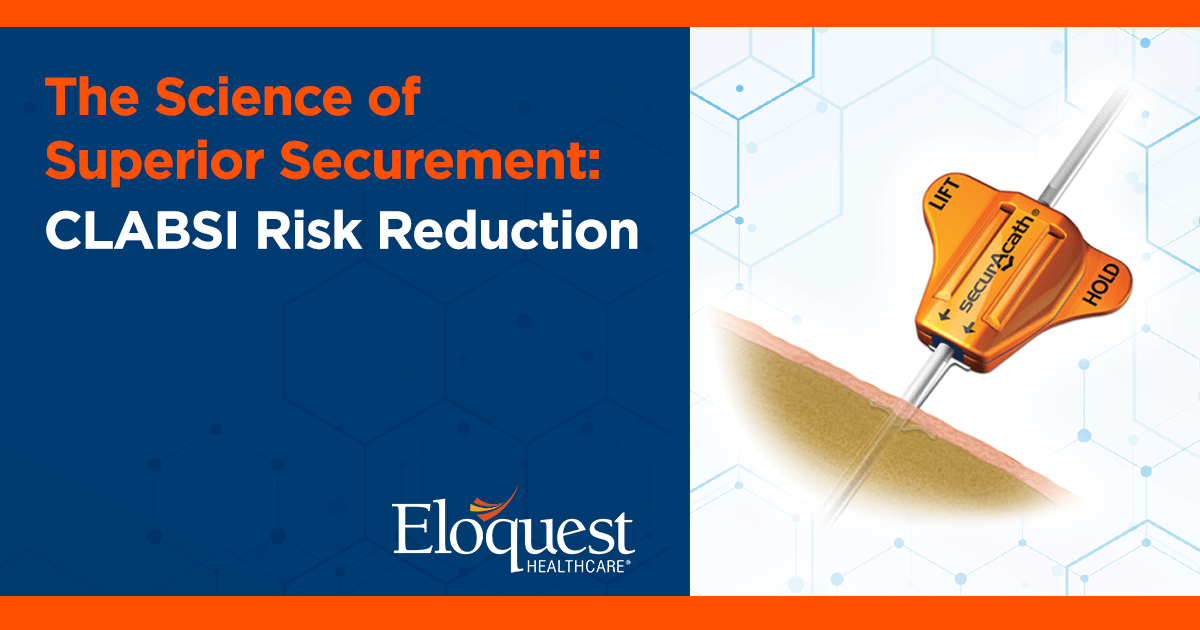
Proper securement is an important component of vascular access device care. There are many options available for securement of intravascular catheters, each with its own advantages and disadvantages. The goal of these securement methods is to ensure continued device function and avoid complications associated with motion, such as phlebitis, thrombosis, and infection. Securement methods should not interfere with routine assessment and monitoring of the access site nor should they impede the delivery of therapy.1
Catheters and Infection
Catheter related bloodstream infections (CRBSIs) pose a serious risk to vascular access patients.
CRBSIs are a significant contributor to hospital morbidity and mortality rates, with 12-25% of CRBSIs resulting in infection-attributable death.2 The COVID-19 pandemic has also highlighted CLABSIs as a top concern, as there was a 24% increase in CLABSI occurrence between 2019 to 2020. The largest incremental spike was seen in the ICU, with a 50% increase in CLABSI cases compared to baseline. 3
These infections are not only detrimental to patient outcomes, but also strain facilities’ budgets, with hospitals absorbing most of complication-related costs. The cost per CLABSI episode ranges from $45,272 to $113,125, with an average of $79,199.4
Subcutaneous Engineered Securement Devices (SESDs) and CLABSI Rates
Mark Rowe, MNSc, BSN, RNP, VA-BC and colleagues performed a retrospective observational study to examine whether SESD use had an impact on CLABSI rates when compared to rates observed with the use of adhesive engineered securement devices (AESDs). Data was gathered from a total of 7,779 patients who received peripherally inserted central catheters (PICCs) over a 4-year period. Data included patient demographic information, laterality of device placement, device type, number of lumens, dwell time, organisms grown, and securement device type. Total CLABSI occurrences were compared between patients treated with SESD (SecurAcath) and AESD. 4
The quality review revealed a substantial difference in relative infection risk between the two methods of vascular access securement.

CLABSIs are the cause of a wide array of negative consequences for both patients and healthcare facilities. These infections result in increased morbidity, mortality and financial burdens. The study conducted by Rowe, et al. suggests that SESD use is beneficial to both patients and hospitals by potentially decreasing CLABSI risk and the associated complications and costs.4
Access the full study here
Eloquest Healthcare, Inc. can partner with your institution to facilitate a Vascular Access Device Site Assessment to determine the state of vascular access device & dressing securement for patients in your facility, while providing information on your facility’s infection risk, nurse efficiency, and potential product waste. Click here to request a Vascular Access Device Site Assessment today!
Eloquest Healthcare is committed to providing solutions that can reduce catheter complications. For more information about SecurAcath please call 1‐877‐433‐7626 or complete this form to request an evaluation.








